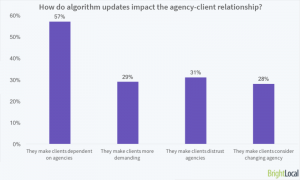There are 23 million small businesses in the U.S.; these same small businesses have increased their budgets and are looking to spend more money this year. Why? Because they expect 2015 to be a good year — a year with both increased profits and revenue growth. How do we know that? A recent survey of over 1,000 small business leaders indicates feelings of confidence in the economy and the expectation their companies will perform even better this year.
With dozens of investment opportunities available, here are the three areas the 2015 State of Small Business Report identified as top priorities for SMBs.
- In 2014, 51% of small businesses spent money either replacing old equipment or maintaining current IT infrastructure. The plan for 2015 is significantly different. 38% of small businesses anticipate an increase in IT spending and are looking to invest their extra cash in new tech initiatives and projects.
For 2015, here are a few of the various technologies SMBs have stated they’re looking to implement:
- Customer Relationship Management (CRM) systems
- Business Intelligence Tools
- Network Security
Network security topped the list of IT investments in 2014 and remains a top priority in 2015. Considering the number of data beaches to hit the news in 2014, it’s no wonder businesses are looking to protect their customers’ data. The fact is that small businesses are just as vulnerable, maybe even more so, than their larger counterparts. This concern was also expressed in a recent Manta survey, indiciating 31% of small business respondents felt the same., primarily went it had to do with customer credit card information stolen through a point-of-sale breaches – these concerns are legitimate. According to a recent McAfee survey, 60% of all cybercrime is now directed at small businesses.
As SMBs look to invest in new technology tools, thorough knowledge of potential security risks and vulnerabilities is imperative to successful implementation. Don’t just act without putting into place policies that protect both your company and your customers.
Here are just a few expert tips: monitor your credit, install anti-virus and anti-malware software on all devices, physically secure your equipment, and, most important, educate your employees on risks and best practices.
- Currently, 60% of SMB leaders use what they’ve identified as “social media” as their main marketing tool while less than 3% of small business revenue is reinvested in marketing (the national average is 10.2%). Free, social media channels like Facebook, LinkedIn, and Twitter are simple to use; however, small businesses looking to distance themselves from the competition should look at investing in paid ad campaigns like the to business marketers. These pay-per-click ads offer SMBs the opportunity to expand into newer markets, create new leads, and offer more personalized service to consumers.
Additionally, 59% of small businesses see their websites as an important part of their business; however, over half said less than 11% of their annual revenue in 2014 was generated online. This is a fantastic chance for SMB marketing departments to revitalize their websites to showcase products, especially if the website design’s focus is geared toward the mobile environment. 46% of SMBs use email (the 2nd most widely used marketing tool) to reach customers.
Combining personalized email with an easy-to-use website will drive revenue growth by attracting and retaining new customers – for 46% of small businesses that’s exactly how they expect grow in 2015.
- The unemployment rate is continuing to fall as we head into the new year. In 2014, unemployment fell to 5.8%, and this will continue on its current path and drop an additional half a percentage point by the second quarter of 2015. As an economic indicator, the falling unemployment rate has given businesses the confidence to hire additional staff.
Another reason small businesses are hiring is because their concerns about the new healthcare laws are diminishing, despite economists’ predictions. As small businesses leaders saw exactly what insurance premiums looked like under the new law, their worries decreased. This is especially true since there’s more competition among insurance providers and the premium increases are much lower. John Arensmeyer, CEO of Small Business Majority, stated, “There used to be regular double-digit, sometimes triple-digit premium increases and now we’re seeing increases of often under 5%.”
Most SMBs have chosen one of three options when it comes to insuring employees:
- They are providing the same coverage they’ve always offered and are hoping it meets the health care law requirements
- They’re not providing any insurance and sending employees to state health care exchanges to buy their own insurance
- Instead of offering insurance coverage, they’re paying employees an allowance to help them buy insurance on their own. In fact, nearly 3% of 1,600 small businesses surveyed by the Society for Human Resource Management plan to give employees subsidies next year so they can buy their own coverage
As a small business owner, in order to grow a successful business, you will need to make investments in your company’s future. Luckily, it looks like 2015 holds plenty of opportunities for you to do just that.
- Hire new staff to provide quality service to your customers
- Invest in marketing – don’t just rely on free methods anymore.
- If your products are sold in a traditional brick and mortar, revamp your website to offer your full product line on the web.
- Invest in technology products that will improve your business efficiency and help you serve your customers better; this will pay dividends in the long-term.
Tools like CRM systems and BI tools will allow you to make better business decisions, maximize your current opportunities, as well as turn future prospects into new customers. These types of investments not only improve your business, but they can provide a significant advantage over your competition.
(291)
Report Post









